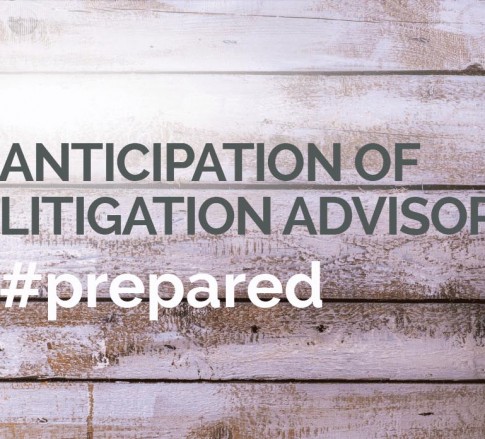Even Private Facebook Posts Can Come Back to Haunt You: Discoverability of Private Facebook Profiles
March 25, 2019
By: Grace E. Hurney
It’s no surprise that Facebook is king of social media. Facebook has—as of December 2018—1.52 billion daily active users and 2.32 billion monthly active users.[1] Twitter, by way of comparison, has 126 million daily active users,[2] and Instagram has around 500 million.[3] Users post fifty-five million Facebook status updates each day. Given Facebook’s massive presence in our daily lives, it’s no wonder that Facebook posts have become a heavily-litigated issue in discovery. In the case discussed below, the Court of Appeals of New York allowed discovery to proceed on a private Facebook account.
In Forman v. Henkin, plaintiff Kelly Forman sued defendant Mark Henkin after she fell off his horse.[4] Plaintiff alleged spinal cord and traumatic brain injuries resulting in cognitive deficits.[5] Plaintiff testified at her deposition that, prior to her injury, her Facebook account showcased an active lifestyle. After her accident, however, she allegedly became more “reclusive” and even had “difficulty using a computer and composing coherent messages.”[6] She no longer played sports, traveled, went horseback riding, cooked or went to the movies or the theatre.[7] She testified that she deactivated her Facebook account six months after her injuries but could not recall if she had posted any photographs on Facebook post-accident.[8]
Defendant sought to obtain the entirety of plaintiff’s private Facebook account.[9] Plaintiff refused, and defendant filed a motion to compel the production of the private material, arguing that the contents were relevant both to the scope of plaintiff’s injuries and her credibility.
The Supreme Court of New York—the trial court—granted the defendant’s motion to compel in part, directing plaintiff to produce all photographs prior to the accident that she intended to use at trial, as well as all posts she made post-accident.[10] Plaintiff appealed, and the Appellate Division modified the trial court’s decision by eliminating the requirement to turn over data relating to post-accident messages.[11]
On appeal, the Court of Appeals agreed with defendant that the lower court erred in employing a heightened threshold for production of “private” social media records that were not shared on the public portion of the account.[12] The Court observed that limiting discovery to the public portion of social media records “allow[s] the account holder to unilaterally obstruct disclosure merely by manipulating ‘privacy’ settings or curating the materials on the public portion of the account.” Under such a standard, disclosure would turn on the “extent to which some of the information sought is already accessible—and not, as it should, on whether it is ‘material and necessary in the prosecution or defense of an action.’”[13]
The Court of Appeals recognized that it would be improper to hold that plaintiff’s entire Facebook account is discoverable because that would be tantamount to permitting discovery of every photograph or communication that a party ever shared with any person on any conceivable topic before or after the incident and “would be likely to yield far more nonrelevant than relevant information.”[14] Instead, the Court utilized a balancing approach.[15] First, the court considered the nature of the event that caused the litigation and the injuries alleged to assess whether relevant material was likely to be found on the party’s Facebook page. Second, the court “balanc[ed] the potential utility of the information sought against any specific ‘privacy’ or other concerns raised by the account holder,” cautioning that courts “should issue an order tailored to the particular controversy that identifies the types of materials that must be disclosed while avoiding disclosure of nonrelevant materials.”[16]
The Court of Appeals concluded that photographs posted after the accident were discoverable because they were relevant to the plaintiff’s post-accident activities and/or limitations.[17] In reaching this decision, the Court analyzed plaintiff’s deposition testimony that she posted “a lot” of photographs before the accident that showed an active lifestyle. Because of this acknowledged tendency to post on Facebook photographs representative of her life activities, there was a reasonable basis to infer that photographs she posted after the accident might be reflective of her post-accident activities and/or limitations.[18] The Court also held that it was reasonable and relevant to require plaintiff to disclose data underlying her Facebook posts post-accident because of her claim that her injuries caused cognitive injuries that made it difficult for her to write or use a computer—it would also rebut plaintiff’s specific claim that “she [was] painstakingly slow in crafting messages.”[19]
This case may be useful in defending a variety of matters, such as personal injury and employment cases, particularly where physical injuries or emotional injuries (diminished enjoyment of activities the plaintiff used to enjoy) are alleged. Defendants’ counsel should capture any online or social media content that could be relevant to litigation and depose plaintiffs about their social media profiles and activity levels. Such admissions could be key in arguing for the disclosure of a private profile in later motion to compel.
Author: Grace Hurney, Associate, Labor & Employment
© March 2019 Jackson Kelly PLLC
[1] Stats, Facebook Newsroom, https://newsroom.fb.com/company-info/.
[2] Q4 and Fiscal Year 2018 Letter to Shareholders, Twitter, https://s22.q4cdn.com/826641620/files/doc_financials/2018/q4/Q4-2018-Shareholder-Letter.pdf
[3]Instagram Business, Instagram, https://business.instagram.com/.
[4] Forman v. Henkin, 30 N.Y.3d 656, 659, 93 N.E.3d 882 (2018).
[5] Id.
[6] Id. at 659.
[7] Id.
[8] Id.
[9] Id. at 659.
[10] Id. at 660.
[11] Id. at 660–61.
[12] Id. at 663.
[13] Id. at 664 (citing CPLR 3101 [a]).
[14] Id. at 665.
[15] Id.
[16] Id.
[17] Id. at 666–67.
[18] Id. at 666.
[19] Id. at 667.



